by Gabriel Ernst
語言:
English
Photo Credit: Mark Micallef/CC
TAKE A DRIVE anywhere across Thailand and you will be endlessly accosted by flags, national portraits, murals, and statues praising and enforcing Thai identity. The same is true if you turn on the television or radio. Enter any Buddhist temple and you will see portraits of the royalty, adorned with flowers, explicitly connecting Thai religious and spiritual life to the monarchy and state.
Government websites and those of private businesses in May of 2019 all came with a pop up celebrating King Vajiralongkorn’s coronation, while in July they did the same wishing him a happy birthday. If you’re looking across the world for an identity conceived through nationalism, Thailand is rightly known for being rigorously and strictly nationalist.
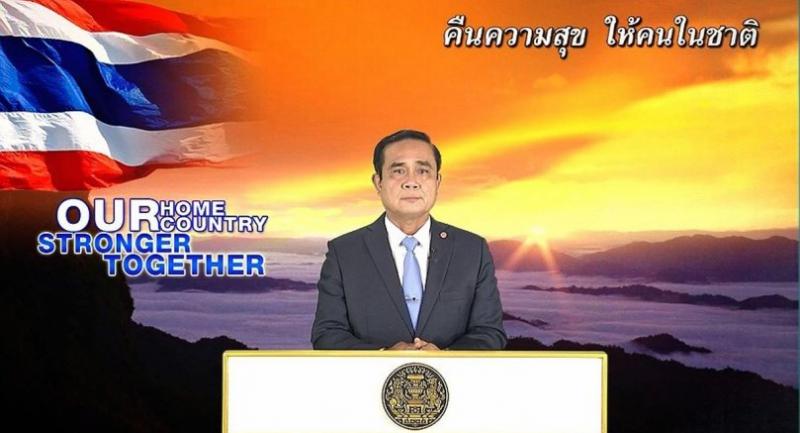 Still image from Prime Minister General Prayut’s daily television address
Still image from Prime Minister General Prayut’s daily television address
Having walked through Bangkok this morning, a Monday, a large portion of the city’s population is donned in yellow shirts. Yellow, the royal color is worn on Monday, for the king, as both the late King Bhumibol and his son King Vajiralongkorn, were both born on a Monday. Twice daily, at 8 AM and 6 PM, the national anthem will play on loudspeaker across public spaces, while passers-by will stand still and joggers come to a stop in order to respectfully mark this twice daily occurrence. The first line swells: “Thailand embraces all people of Thai blood.”
These ceaseless doses of daily nationalism serve one purpose, to enforce the Thai identity and link it to the state, to make being Thai part of the Thai national state. This grand plan, however, did not come out of nowhere. It is, in fact, a direct response and attack on the long history of anti statehood found inside of Thailand’s borders.
“We try to not be Thai”
FAR FROM BANGKOK, in a village deep in the northern hills, sitting with a friend, she tells me frankly: “We are not Thai and we try not to be Thai, “Sometimes I find myself talking to my family in Thai and I think no, try to be Lisu.” This friend is a member of one of Thailand’s myriads of ethnic minorities, in this case, the Lisu. The Lisu people can be found spread across Thailand’s northern hills deep into northeastern Burma and southern China; they are a stateless people with their own language, culture, religion and practices completely distinct from any of the national states that envelope them.
In the 2009 book The Art of Not Being Governed, anthropologist James C. Scott makes the case that the Lisu and many of the other ethnic minorities found in upland Southeast Asia are in fact culturally anti-state. Their fluidic culture, language, lack of an alphabet, and semi-nomadic living practices are a response to escape the states based in the valleys that would have them as subjects. Scott argues that through their very existence they’ve tried to (consciously or not) make themselves an unconquerable population.
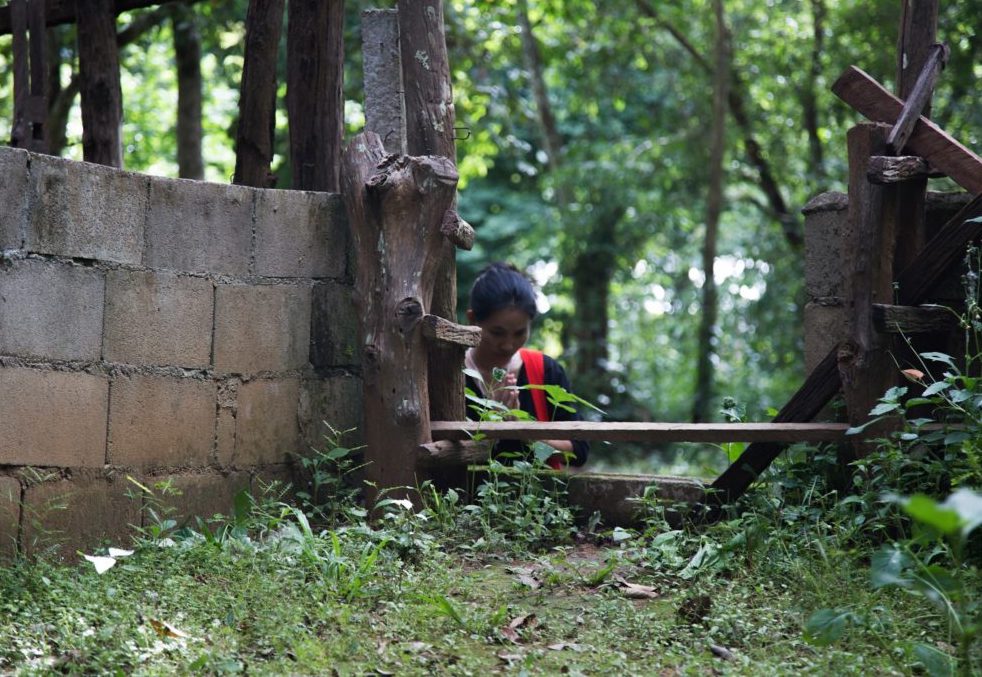 Lisu woman praying in traditional ceremony. Photo credit: Gabriel Ernst
Lisu woman praying in traditional ceremony. Photo credit: Gabriel Ernst
Down the road from us in the Lisu village sits the local government office. Built just twenty years ago, it marked the first formal governing presence in the lives of the local people in this community. “When I was a kid, we used to have no hospitals, no schools, no government,” my friend tells me.
Today the office is covered in flags and murals, dedicated to the monarchy and national state. Those who work in the office are not locals—rather they’re Thai people, brought in to govern the Lisu population. The same is true of the teachers in the local government schools, Thai civil servants assigned to teach the national curriculum. There has also been a concerted effort on building Buddhist temples in these more remote areas, which serve to supplement and eventually replace the animist spiritual beliefs held and practiced by the local people.
Soft and Hard Power
THIS EXTENSION of the state is a clear and direct plan formulated by the central government in Bangkok originating from 20th-century policies of ‘Thaification’. This refers to the process that began in 1933 after the Kingdom of Siam became the Kingdom of Thailand. Championed by dictator Plaek Phibunsongkhram, this saw a massive nationalist overhaul of the state in its relationship with the individual. Notable policies included harshly enforcing the Thai language in the education system, reinforcing the relationship between the monarchy and population, and issuing the Twelve Core Values, a kind of extremely nationalist guide to the ideal ‘Thai’ behavior, ways of living, and etiquette.
These policies can today be seen in the Thai education system, where the social studies curriculum revolves around Thai excellence, favorable accountings of history and rigorous drilling on the importance of the monarchy. Every day in all Thai schools, there is a flag-raising ceremony where the national anthem is sung and the flag raised. Furthermore, mainstream Thai religious practices are also deeply incorporated into the fabric of school life, with monks playing an active role in the day to day activities of the school.
With regards to the north of the country, one of the state’s most effective arms is the Royal Project, which was originally founded in the late 1960s as a means to replace opium crops grown in the hills by ethnic minorities with fruits and vegetables. In its early days, the project was funded and supported by the United Nations. As well as crop replacement, an added and intentional benefit was absorbing minorities into the activities of the Thai state to keep them from being drawn into the drug trade or joining communist insurgencies which at the time were flaring across Southeast Asia.
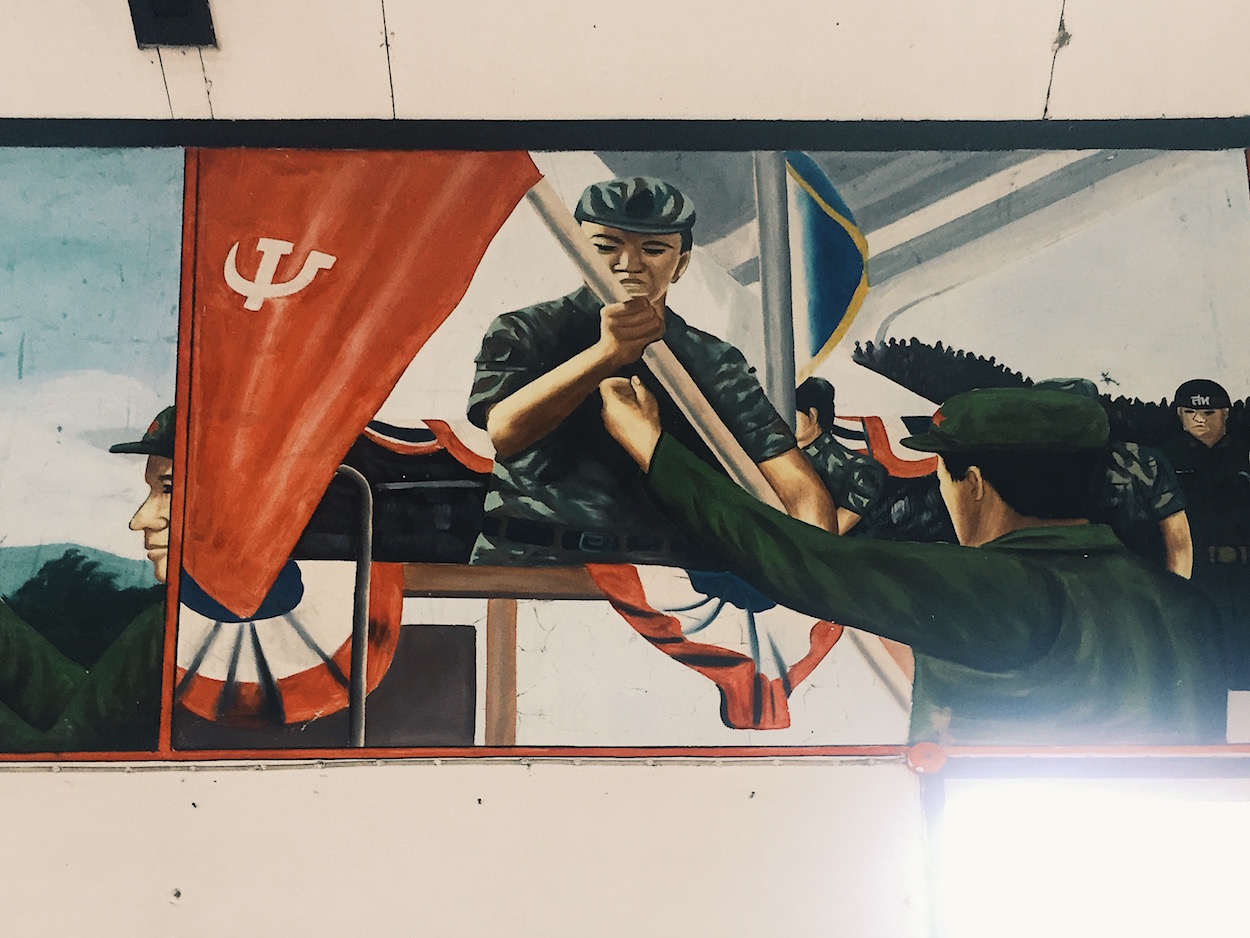 Mural of the Communist surrender in Nan Province. Photo credit: Gabriel Ernst
Mural of the Communist surrender in Nan Province. Photo credit: Gabriel Ernst
Other than this soft power approach, there were other efforts at ethnic minority disenfranchisement during this turbulent era for Southeast Asia, notably the mass mandatory repatriation of 45,000 ethnic Vietnamese from Nakorn Phanom in 1969, the Bangkok government even went as far as banning black Vietnamese-style trousers. There was also a military front against communist insurgencies in northeastern provinces such as Nan and Loei, where many of the rebels were supported by and consisted of ethnic Hmong mountain people. One son of a former Hmong communist soldier told me when visiting Nan: “We lost the war, but we still try and do things our way out here”.
Today, however, the only standing remnants are the Royal Project stations which can be found throughout the hills, many of them serve as laybys for domestic Thai tourists from urban areas—embassies of a kind, to help central Thai people feel acquainted with the faraway hills. The outposts technically now serve the purpose of agricultural research and development.
The agricultural products are sold to a state-operated company that distributes them throughout the kingdom. Thus, intentionally or not, this leaves the locals dependent on the state for their material well-being. Through these means the outposts act as a continuous source of soft power for the central government, to ingratiate themselves with the local population and absorb them into the nation-state.
Living Insurgencies
THE SAME CULTURE of anti-statehood exhibited by the minorities in the north can be found far from the northern hills in Thailand’s longest-serving residents, the Maniq people in the deep south of the country. The Maniq are nomadic hunter-gatherers and, like the Lisu, they have their own language, culture, and no alphabet.
But unlike the Lisu, the Maniq reject all aspects of modernity in favor of a far more traditional existence. Even today, they live without electricity, permanent housing or any of the trapping of modern life; they find their food from hunting with poison-tipped blow darts or by foraging in the forest. When spending time with the Maniq two years ago one of them pointedly told me. “They, (the Thai government), want us to settle down, grow food, go to their schools, [and] be like them. We can’t live like that.” This is pure anti-statehood, a refusal to take part in any kind of settled civilization with powers that supersede their own control.
Above the Maniq’s temporary forest shacks, however, fly two flags, one Thai national flag, and one Thai royal flag. These are erected by the Maniq as a show of good faith to the local Thai plantation owners and national park rangers who have been harassing them for decades.
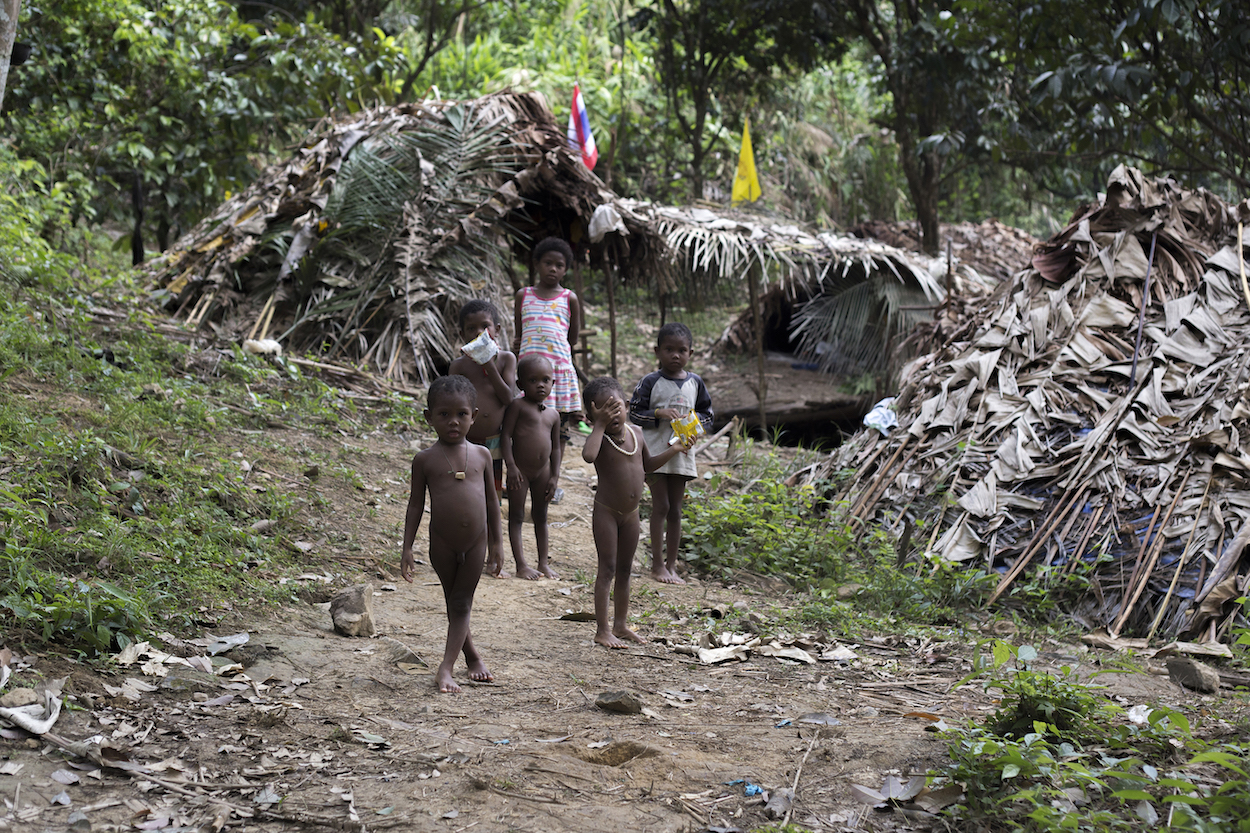 Children waiting just outside a forest camp to go swimming by the river. Over a camp hut flies the Thai national flags, erected as a sign of good faith to the Thai National Park Rangers. Photo credit: Gabriel Ernst
Children waiting just outside a forest camp to go swimming by the river. Over a camp hut flies the Thai national flags, erected as a sign of good faith to the Thai National Park Rangers. Photo credit: Gabriel Ernst
Not too far from the Maniq’s ancestral forest home, the area houses another anti-government group, Thailand’s last surviving armed insurgents. Ethnic Malay Islamists have been fighting the Thai government in the deep South provinces of Pattani, Yala, and Narathiwat since around 2001. The cause of the conflict has to do with the central government imposing national Thai law on a population who demand to live under Islamic Sharia law. Today there is a massive Thai military presence in the area, particularly in downtown Pattani, which looks and feels just like a military occupation. One local told me last year, “We don’t have a problem with Thai people, what we have a problem with is the Thai government.” While this population is not explicitly anti-state it is certainly anti the Thai state, as historically the region was largely offered local government autonomy as a concession for officially remaining within Thai borders.
Geographic Conditions and Class
IN HIS WORK mentioned earlier, James C. Scott also makes the point that, because of the geographic conditions of Southeast Asia, historically speaking, state-building has been no easy task. Due to the annual rainy season, much of the country would become inaccessible to the rulers for months on end, rendering them practically unconquered territory, many of these more remote areas of the country relied on their own institutions for governing and their own culture for identity. As such, those areas remained out of the cultural and political sphere of centralized governments until relatively recently.
Since then the state has been able to move in, and it has done so with force, implementing its own vision governing, absorbing groups into it and providing an alternative identity for the individual in relation to it.
But evidence of this historical lack of state reach is still clear to see in Thailand, with almost every region—even the provinces immediately outside of Bangkok—having a distinct dialect or even language. For example, many rural people in provinces such as Surin, far from the hills of the north, and 450 kilometers from Bangkok in the flatlands of eastern Thailand speak upwards of 4 languages: Khmer, Lao, Surin, and Thai. Beyond language, the people of Surin have their own religious practices and cultural points of reference, which are not found in mainstream Thai culture. These communities live as proof of a Thailand before it was Thai, a place rich in diversity and bound by community strength in local identities and ways of living.
Surin is part of the wider Isaan region. As well as being predominantly ethnically Lao, the region is well known for its rowdiness when getting involved in national politics. The region is significantly poorer and less developed than the rest of the country, which saw large swathes of it rise up against the government in a failed communist revolution, which ran through the latter half of the 20th-century. Nevertheless, the local Lao identity, due to the material conditions the people find themselves in, is heavily supplemented by a class-based identity.
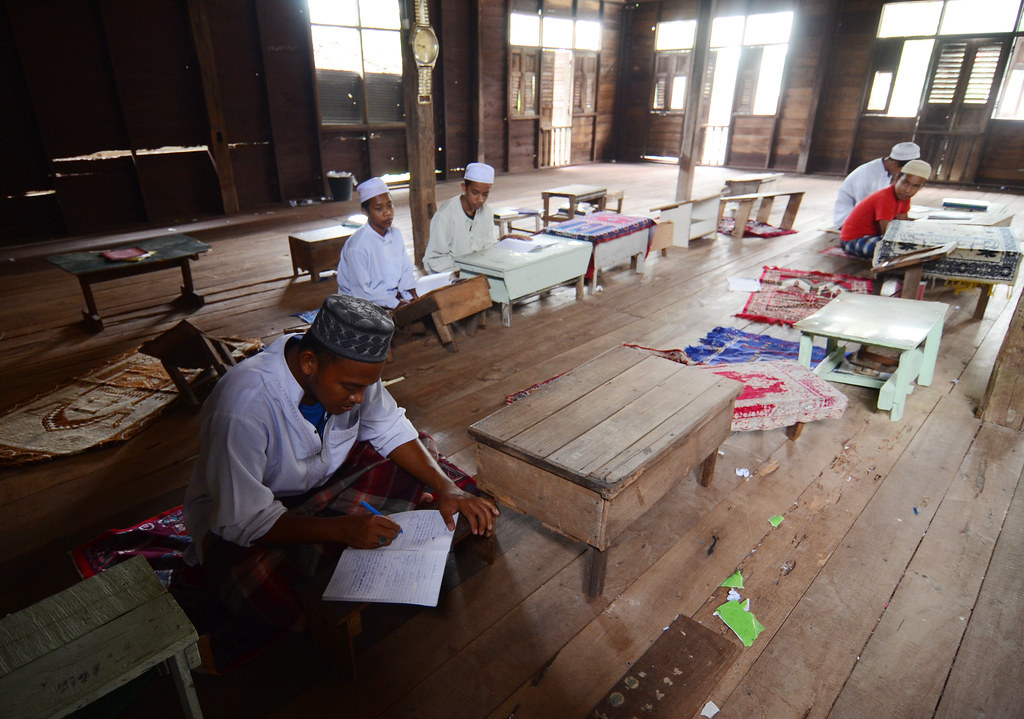 Ethnic Malay students in Yala Thailand. Photo credit: Udey Ismail/CC.
Ethnic Malay students in Yala Thailand. Photo credit: Udey Ismail/CC.
Today the region serves as the constituent base for the ‘redshirts’, a populist leftist political movement founded in 2006 as a response to the coup ousting then Prime Minister Thaksin Shinawatra. Well known for their ability to mobilize the rural peasantry, the red shirts have successfully occupied central Bangkok on several occasions, fighting pitched street battles with “yellow shirt” nationalist counter-protestors. While the red shirts are often accused of being anti-monarchy they, much like the insurgents in Pattani, are not necessarily anti-state, but their tendencies point to a clear ideology of anti- ‘the-Thai-state-as-it-exists-today’, which as we’ve established is one focused on nationalism led from Bangkok.
The Result of Nationalism
THESE CONDITIONS across the kingdom go a long way to explaining the lengths, depths, and purpose of Thai nationalism, its reach and how vehemently it’s enforced. To look at nationalism in a vacuum is to see the endless array of flags and murals, but to truly understand it we must see why the flags are there, not because Thailand’s culture is prone to patriotism, but the total opposite. Much of the culture of Thailand has, for centuries, opposed Thailand, or whatever the ruling state at the time was, such as contemporary Thailand’s historical predecessors, Ayutthaya and Sukhothai.
The purpose of today’s nationalism is to provide some kind of collective identity in lieu of community, political or class-based identity. It intends to supersede material or local living conditions, to form unity around a project focused on identity-based off of national cultural signifiers such as the Thai language, religion, monarchy, military and the flag, which are all interconnected and enforced through the many opulent displays of nationalism and the education system. This allows the ruling class to frame themselves as being part of the same identity as the working class, thus stifling any kind of opposition focused around anti-state beliefs or anti-Thainess.
Of course, this opposition still exists in different guises, from the Lisu in the North to the Maniq of the South. The people in this land spent centuries, even over a millennium, avoiding cultural and political capture. However due to new technologies, the reach of the state has the ability to go far further and deeper, penetrating and finally capturing those people and communities that for so long were out of its reach.

